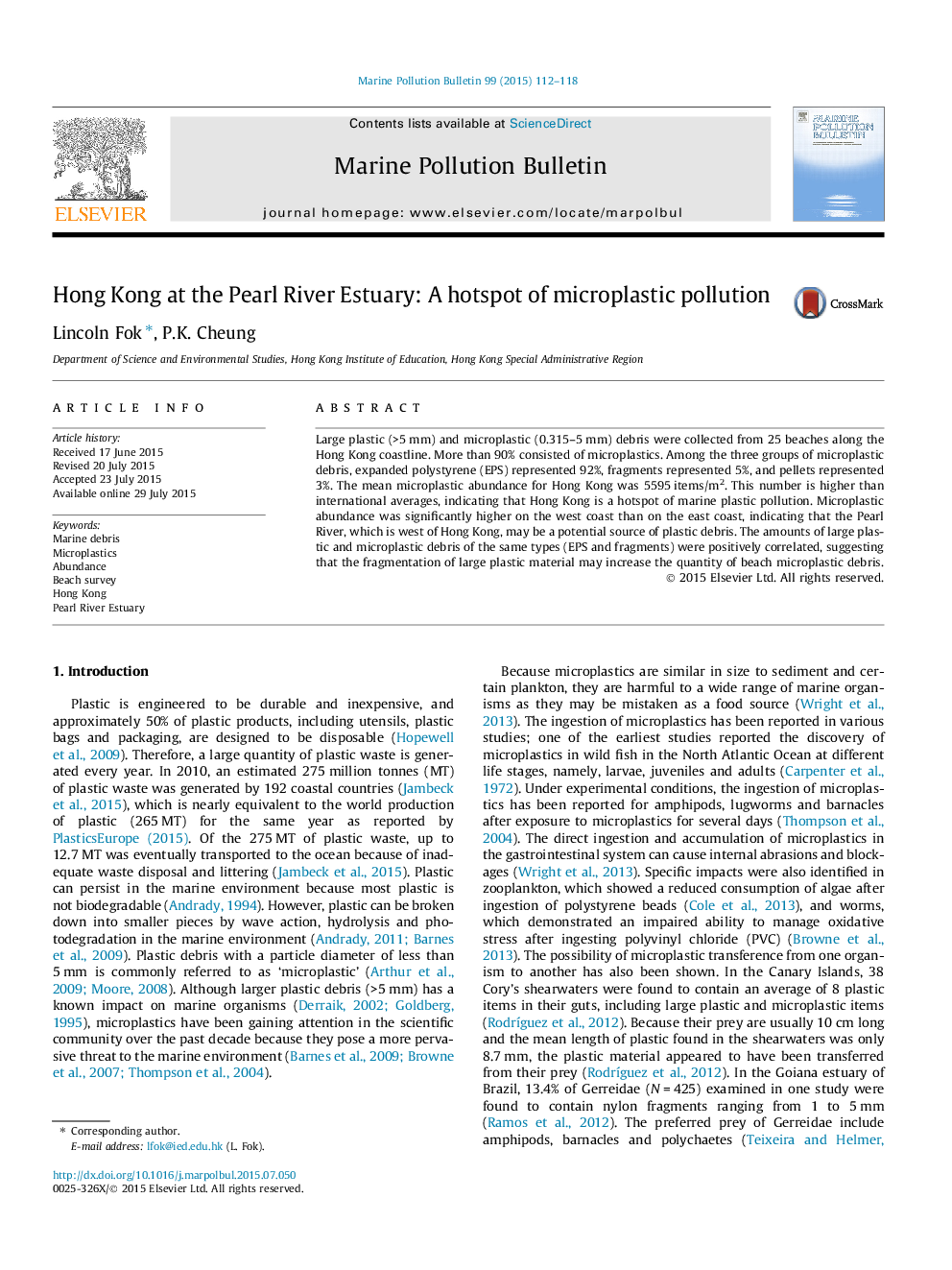| Article ID | Journal | Published Year | Pages | File Type |
|---|---|---|---|---|
| 4476656 | Marine Pollution Bulletin | 2015 | 7 Pages |
•Plastic debris were sampled from 25 beaches at the Pearl River Estuary.•Expanded polystyrene debris represented a vast majority of the samples.•The mean abundance of microplastic debris was higher than international averages.•Spatial distribution of debris indicated the Pearl River as a potential source.
Large plastic (>5 mm) and microplastic (0.315–5 mm) debris were collected from 25 beaches along the Hong Kong coastline. More than 90% consisted of microplastics. Among the three groups of microplastic debris, expanded polystyrene (EPS) represented 92%, fragments represented 5%, and pellets represented 3%. The mean microplastic abundance for Hong Kong was 5595 items/m2. This number is higher than international averages, indicating that Hong Kong is a hotspot of marine plastic pollution. Microplastic abundance was significantly higher on the west coast than on the east coast, indicating that the Pearl River, which is west of Hong Kong, may be a potential source of plastic debris. The amounts of large plastic and microplastic debris of the same types (EPS and fragments) were positively correlated, suggesting that the fragmentation of large plastic material may increase the quantity of beach microplastic debris.
